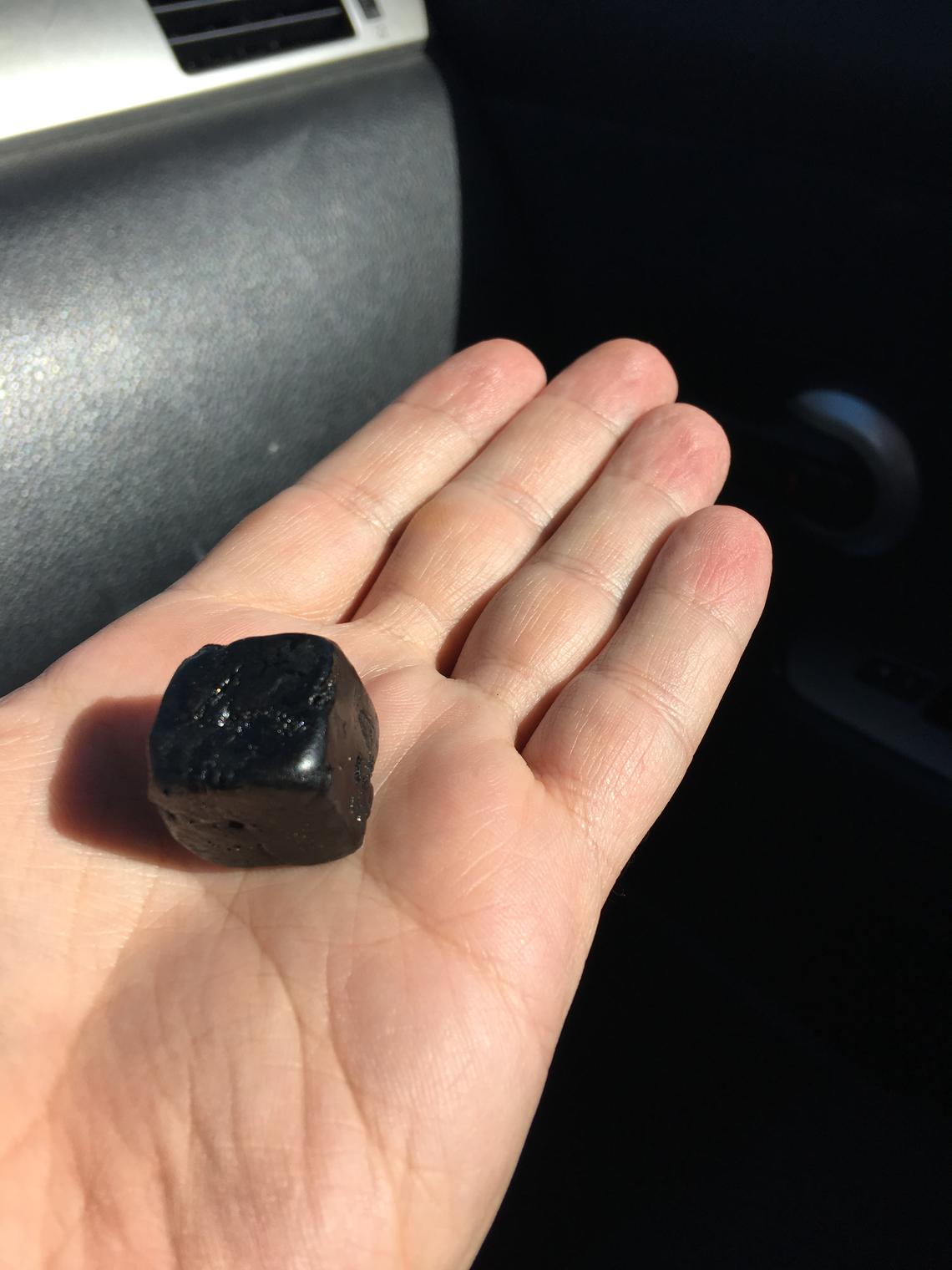Sept. 6, 2017
Pipeline pain relief on horizon with spill-resistant bitumen

Ian Gates, above, describes each pebble of bitumen as resembling a liquid-filled headache capsule and, for an Alberta struggling to build pipelines, this tiny package could spell pain relief indeed.
Freshly patented and weeks away from pilot-scale production, the professor’s revolutionary heavy oil and bitumen pellets may finally provide a pipeline-free solution to getting Alberta’s largest oil reserves to market in a cheap, sustainable manner, while vastly reducing the environmental risk of transportation.
“There are only so many pipelines but there are rail tracks everywhere, and anywhere rail goes, so can these pellets,” explains Gates, professor of chemical and petroleum engineering at the University of Calgary’s Schulich School of Engineering.
“Pipelines are finite and go to finite spots. Railcars go to virtually every port on every coast.”
Balls of bitumen a happy accident
If it works as Gates and his team have demonstrated in the laboratory, the self-sealing balls of bitumen represent a game-changing breakthrough for an energy industry struggling to get its product to market. The pill-sized pellets, with their liquid core and super-viscous skin, vastly reduce the chance of a damaging spill or environmental accident — a fortuitous result, given that invention was the result of an accident in the laboratory.
“We were trying to upgrade bitumen and learned how to degrade it instead,” remembers Gates, with a laugh. “We put it on the shelf for quite a while, because who would want bitumen pellets. It turns out there’s a huge market for this stuff.”
Gates partnered with Innovate Calgary, the technology-transfer and business-incubation centre for the University of Calgary, to assist in the commercialization of his groundbreaking technology and accelerate the venture.
“Through our energy technology incubator, we were able to not only protect technology through intellectual property management, but connect with potential industry partners and customers who might help advance the technology to a field trial, and ultimately, a full scale solution,” says Stace Wills, vice-president of energy at Innovate Calgary.

Bitumen balls can range from golf ball- to pill-size.
Innovate Calgary
New technology allows production at wellhead
Fast-forward to summer 2017, and the team has now developed a technology that will allow them to produce pellets of varying size right at the wellhead, using roughly the same energy as it takes to prepare bitumen for shipping the traditional way, using dilute for liquid transport. By November, the fully automated technology, developed with the support of Innovate Calgary, will be producing balls by the barrelful, and Gates expects the project to grow exponentially because it avoids current pipeline controversies.
“We convert it to a solid phase skin with bitumen inside, and that we can then ship worldwide in standard railcars,” he says. “With the coal industry diminishing, there are thousands of these railcars built for coal that are now sitting idle. When you look at those railcars as very cheap transport, that’s a few hundred thousand barrels a day that could be transported, using solid-phase bitumen, to markets throughout the planet.”
While it’s not the first attempt to create a solid form of bitumen, Gates says this breakthrough technology means pellets can be rapidly produced without polymers or other additives, and without the need for complex equipment like microwaves. “Ours is a much simpler and cost-effective solution,” he explains.
Spill risk drastically reduced on land and sea
Gates says the pellets are tough and can safely transport the province’s bitumen without the worry of spills and, with a gas bubble injected inside each one, they are also buoyant. “If they spill, you just scoop them up again,” says Gates.
Once shipped, the pellets can be refined just like regular bitumen. “The way we designed it, you can reconstitute it back into bitumen, so if you wanted the original product, we can reverse it,” he explains. “We can ship it to an end market, reconstitute it back to bitumen, and that can be used in any upgrader just as it was before.”
If upgrading is necessary, that is. Gates says Alberta’s energy future may be better spent investing in non-transportation oil markets, using bitumen for carbon-demand products like carbon fibre and graphine. He says this first generation of bitumen balls will be ideal for road paving, without the need to upgrade it further.
“Folks are building roads all over this planet, and heavy oil and bitumen as a feedstock material for asphalt is better than conventional oil,” he says. “Our reliance has been on the idea of turning our oil into transportation fuels, and we need to refocus that. There’s a huge economic bonus to be had by Alberta, but it requires research and investment.”
About Innovate Calgary
Innovate Calgary is the technology-transfer and business-incubation centre for the University of Calgary working with the Office of the Vice-President (Research) to help bridge the gap between discovery and innovation. We help guide research or innovation-driven enterprises to market or to the next stage of business growth. From ideation to commercialization, we have successfully supported our innovation driven community for 35 years.
